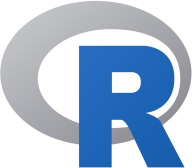
RStudio and GitHub go together like two wheels of a bicycle. Together, they form a low-overhead yet powerful open source workbench – a lean machine that can help take your data to far places.
In a recent informal evaluation of coral reef related research articles that included simultaneous publication of code and data, by far the most popular language used was R, and RStudio is the most popular interface for working with R.
In a CRESCYNT Data Science for Coral Reefs: Data Integration and Team Science workshop held earlier this year at NCEAS, the most powerful skill introduced was using RStudio with GitHub: writing data and code to GitHub from RStudio.
Once the link is set up, the work can continue in RStudio in the way people may be familiar with, and then one can make commits to GitHub periodically to save the work and potentially pave the way for collaboration.
- Download and install R
- Download and install R Studio
- Create a GitHub account
- Connect a repository in the GitHub account to RStudio. This takes multiple steps; here are some good options to work through the process.
You can use sections of NCEAS’s long tutorial on Introduction to Open Data Science, initially developed by their Ocean Health Index group. Use the sections on overview of R and RStudio, Markdown, intro to GitHub, and skip down to collaboration in GitHub.
There are a number of other tutorials available to show how to make and use these softwares together; a beautifully clean and clear step-by-step tutorial is from Resources at GitHub; another excellent one is from Support at RStudio.
Also available to you: Hadley Wickham on Git and GitHub, a Study Group’s Version Control with RStudio and GitHub Simply Explained, R Class’s An Introduction to Git and How to Use it with RStudio, and U Chicago’s Using Git within RStudio, and Happy Git’s Connect RStudio to Git and GitHub. You may prefer the style of one of these over others.
If later you want to go further, come back for these tutorials hosted at R-Bloggers: R Blogdown Setup in GitHub, and Migrating from GitHub to GitLab with RStudio. And good news – you can now archive a snapshot of a GitHub repository to preserve and even publish a particular version of your RStudio work – plus get a doi to share – at Zenodo.
Summary: Many research scientists use RStudio as their primary analytical and visualization tool. RStudio now has the ability to connect to a GitHub repository and make commits to it from RStudio. This permits critical core functions for a simplified workbench: documenting workflows (R Markdown), preserving code and provenance, producing repeatable results, creating flexible pipelines, sharing data and code, and allowing collaboration among members of a team. Versioning and teamwork is simplified by making commits frequently and always doing fresh pulldowns prior to commit (rather than focusing on branch development). The process is valuable for individual researchers, documenting project work, and collaborating in teams.
Related blogposts: Learning to Love R More and R Resources for Graphing and Visualization.
>>>Go to the blog Masterpost or the CRESCYNT website or NSF EarthCube.<<<



 If you’re attending
If you’re attending 


 We are driven to learn like
We are driven to learn like  You likely already know of the
You likely already know of the 




